 The Climax, 1969
The Climax, 1969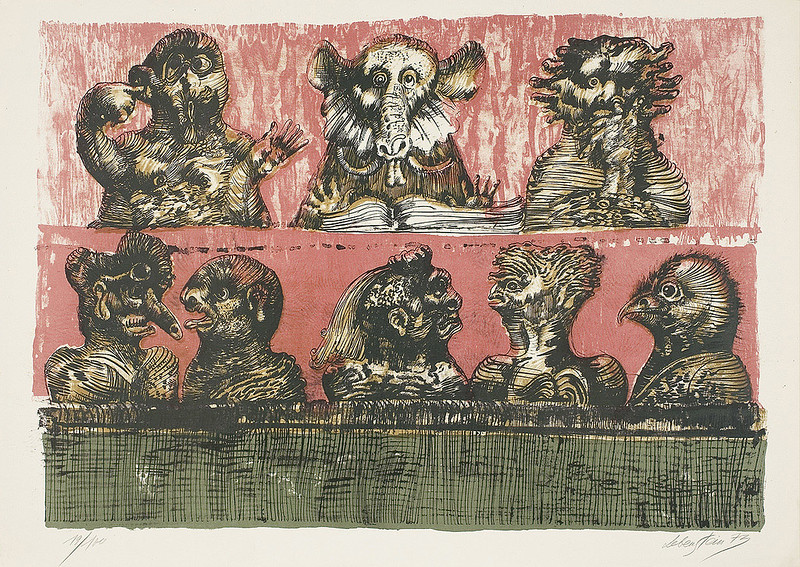 Hall Of Hearings , 1973
Hall Of Hearings , 1973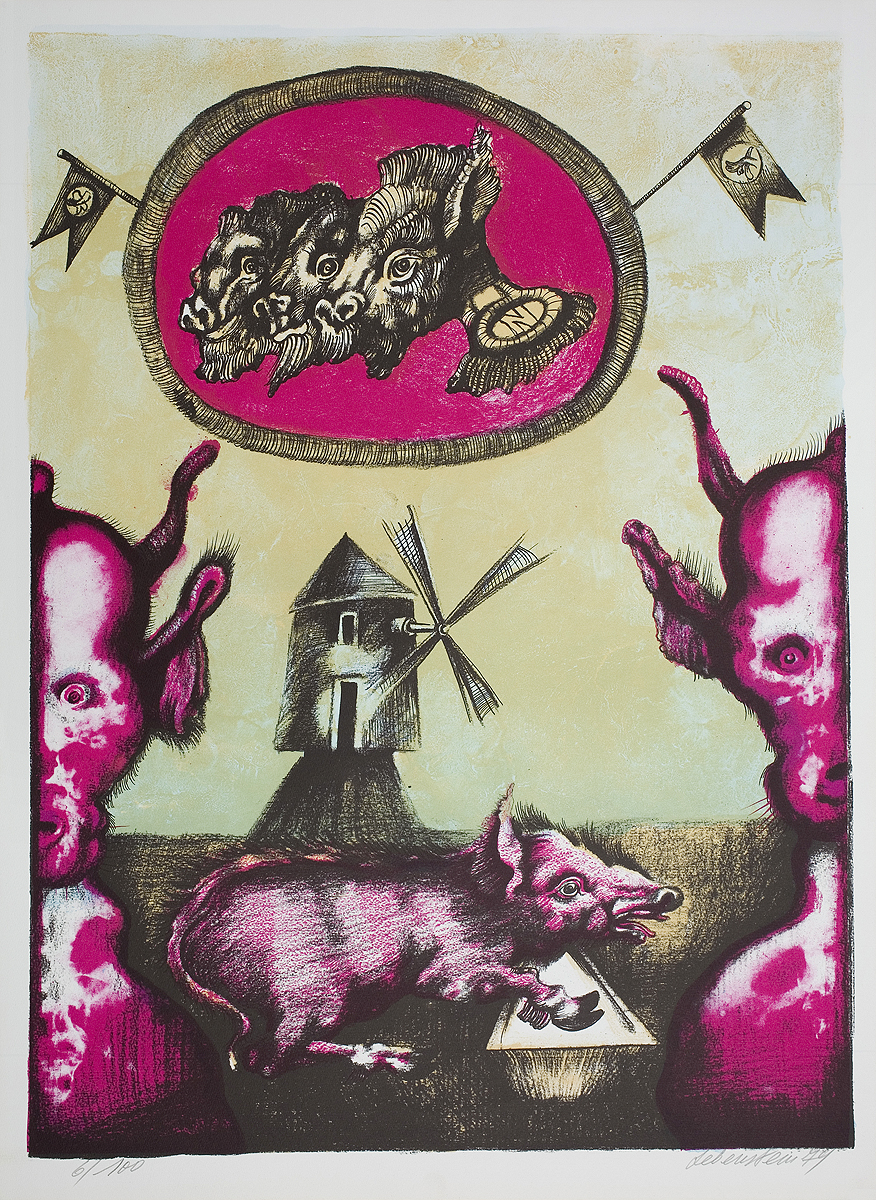 Invasion
Invasion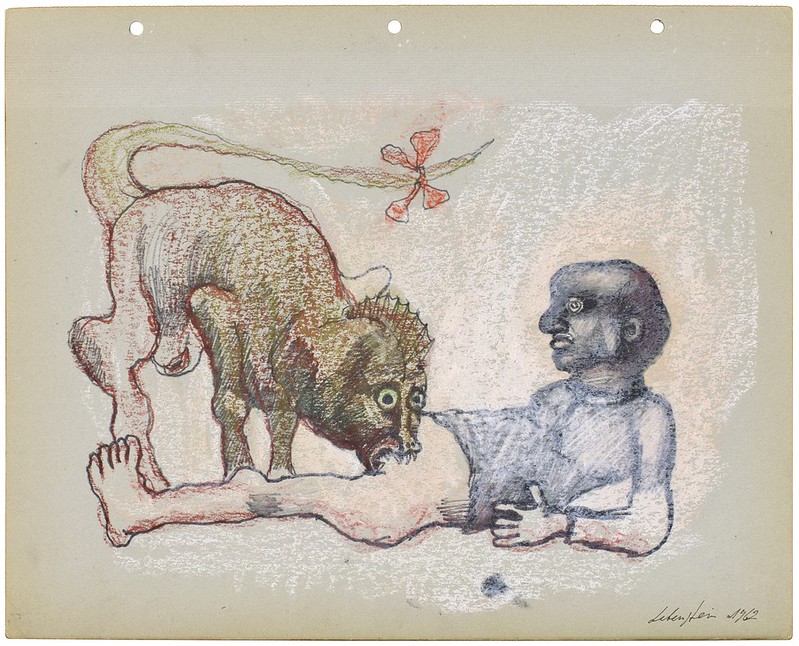 Untitled , 1962
Untitled , 1962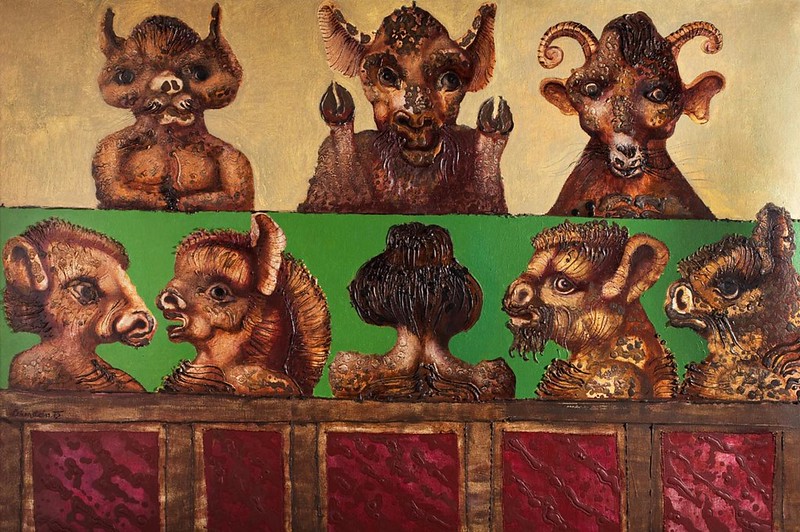 Hall - Hearings -Sad - Appeal, 1975
Hall - Hearings -Sad - Appeal, 1975 Couple Squatting
Couple Squatting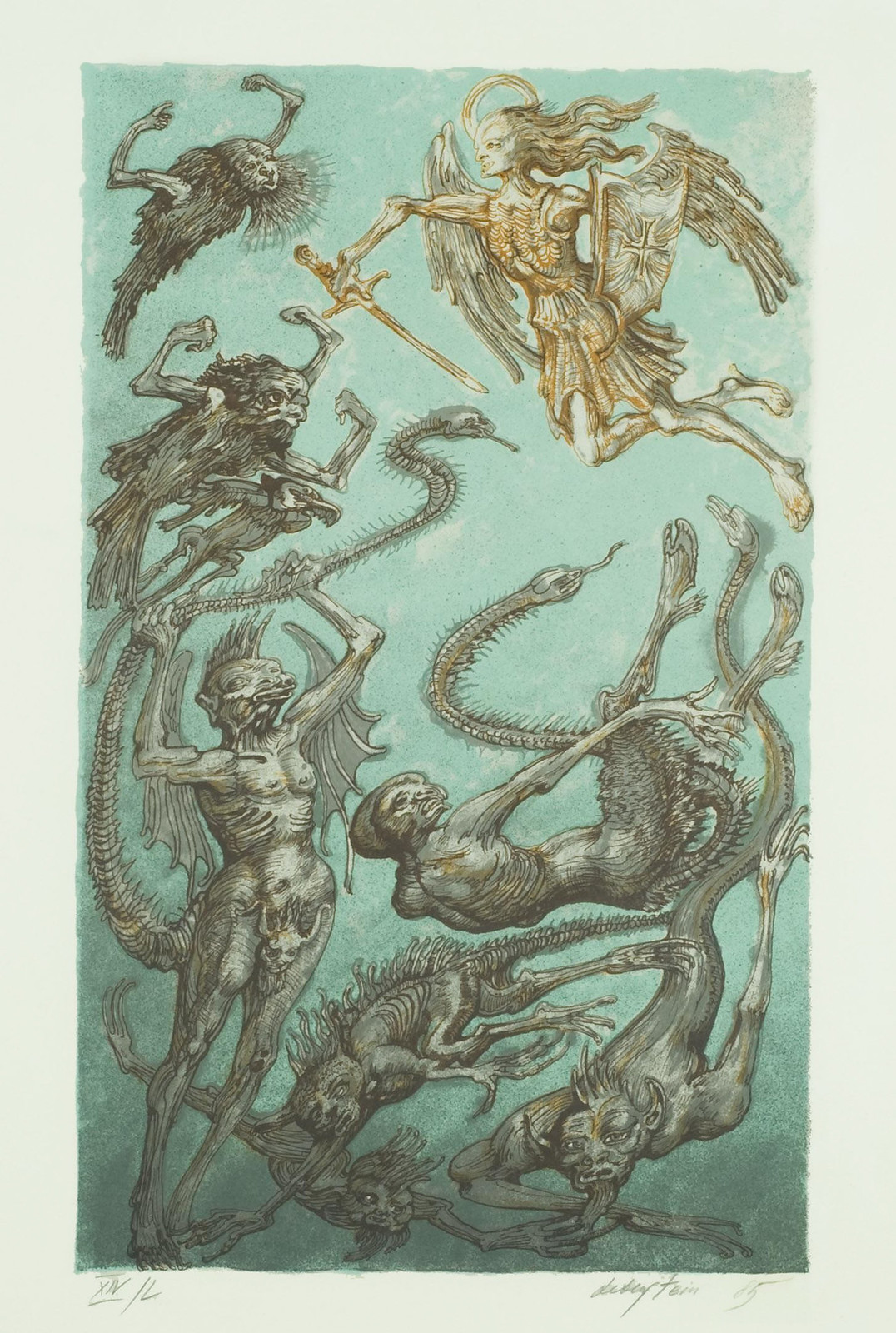 Apocalypse , 1985
Apocalypse , 1985 Club Bar, 1976
Club Bar, 1976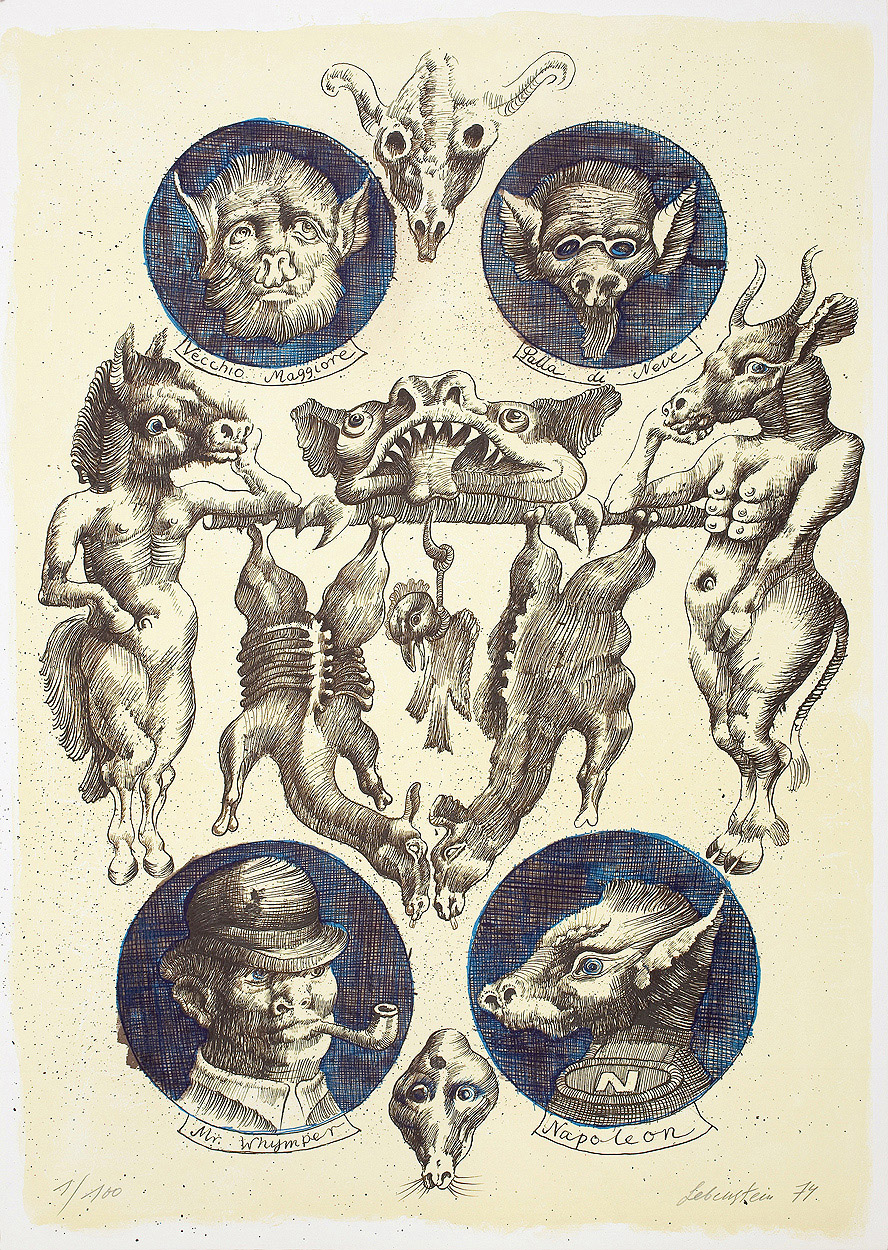 Illustration for Animal Farm, 1974
Illustration for Animal Farm, 1974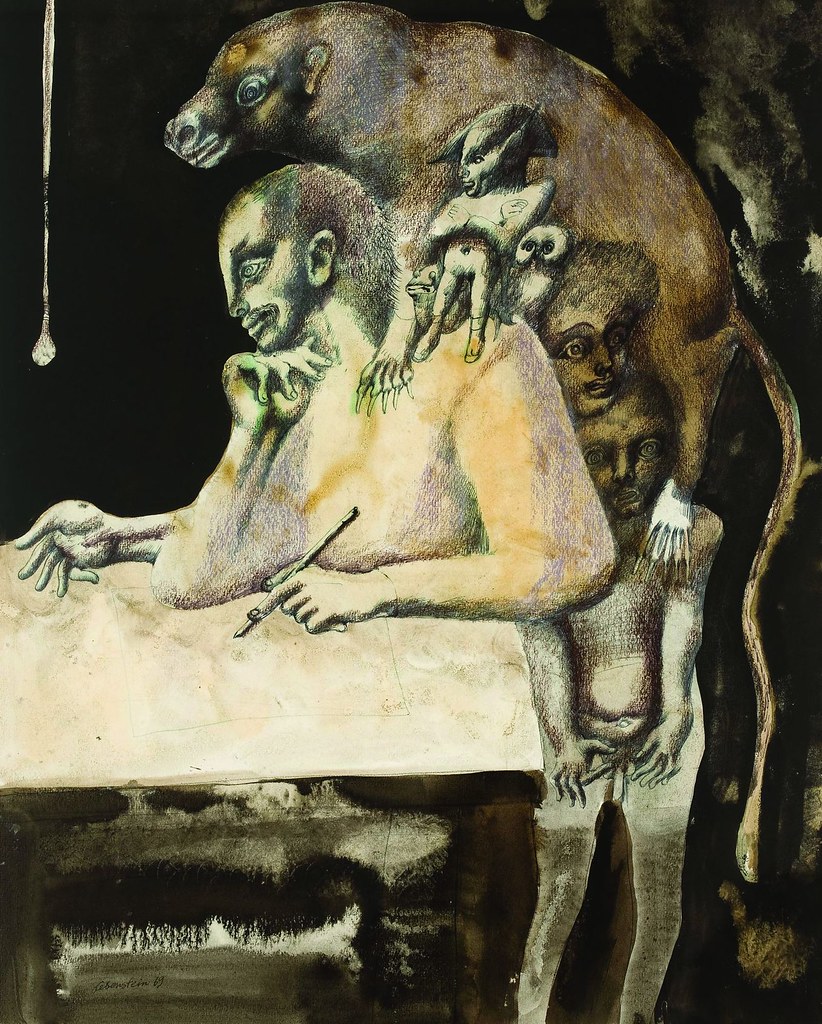 Les Siens, 1969
Les Siens, 1969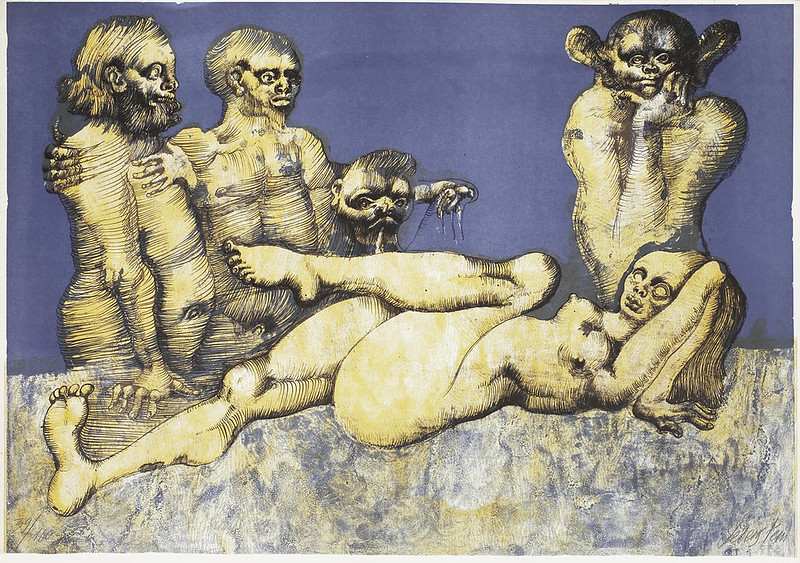 Guard House (Straż przyboczna), 1973
Guard House (Straż przyboczna), 1973 Corps de Garde 2, 1970
Corps de Garde 2, 1970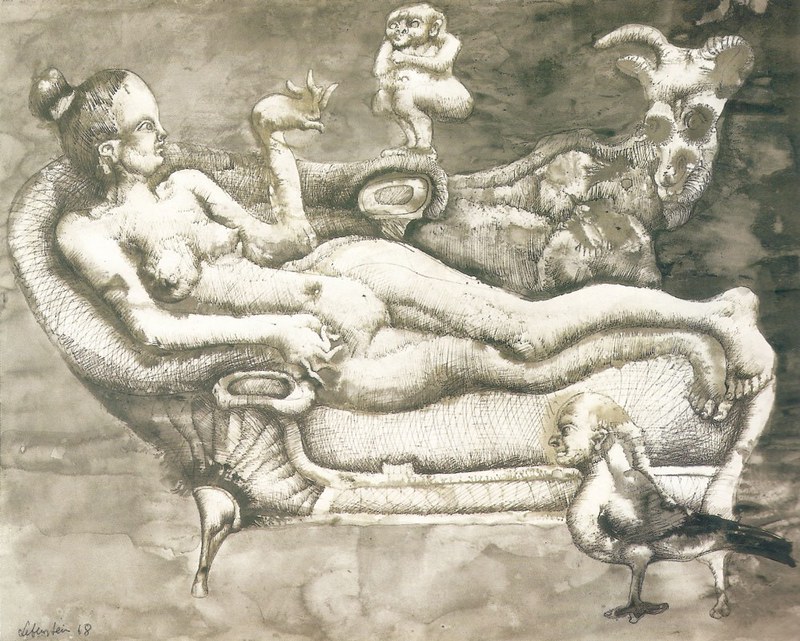 Act, 1968
Act, 1968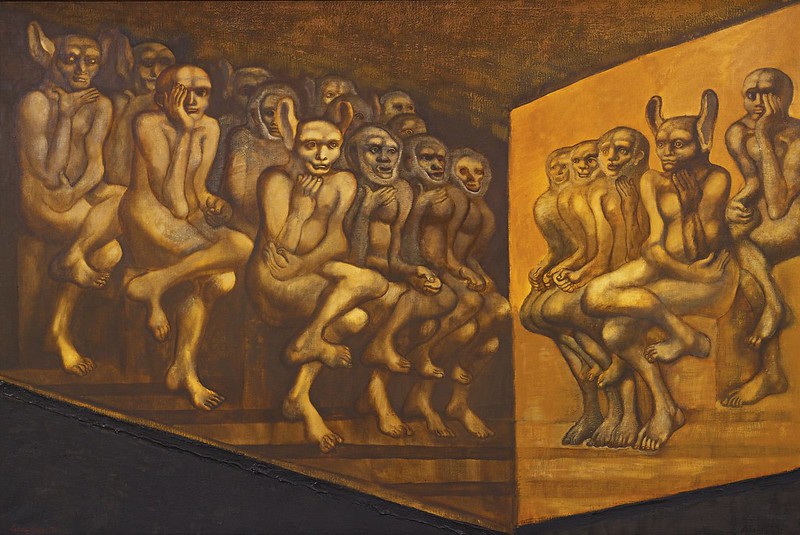 Contradicting Images, 1971
Contradicting Images, 1971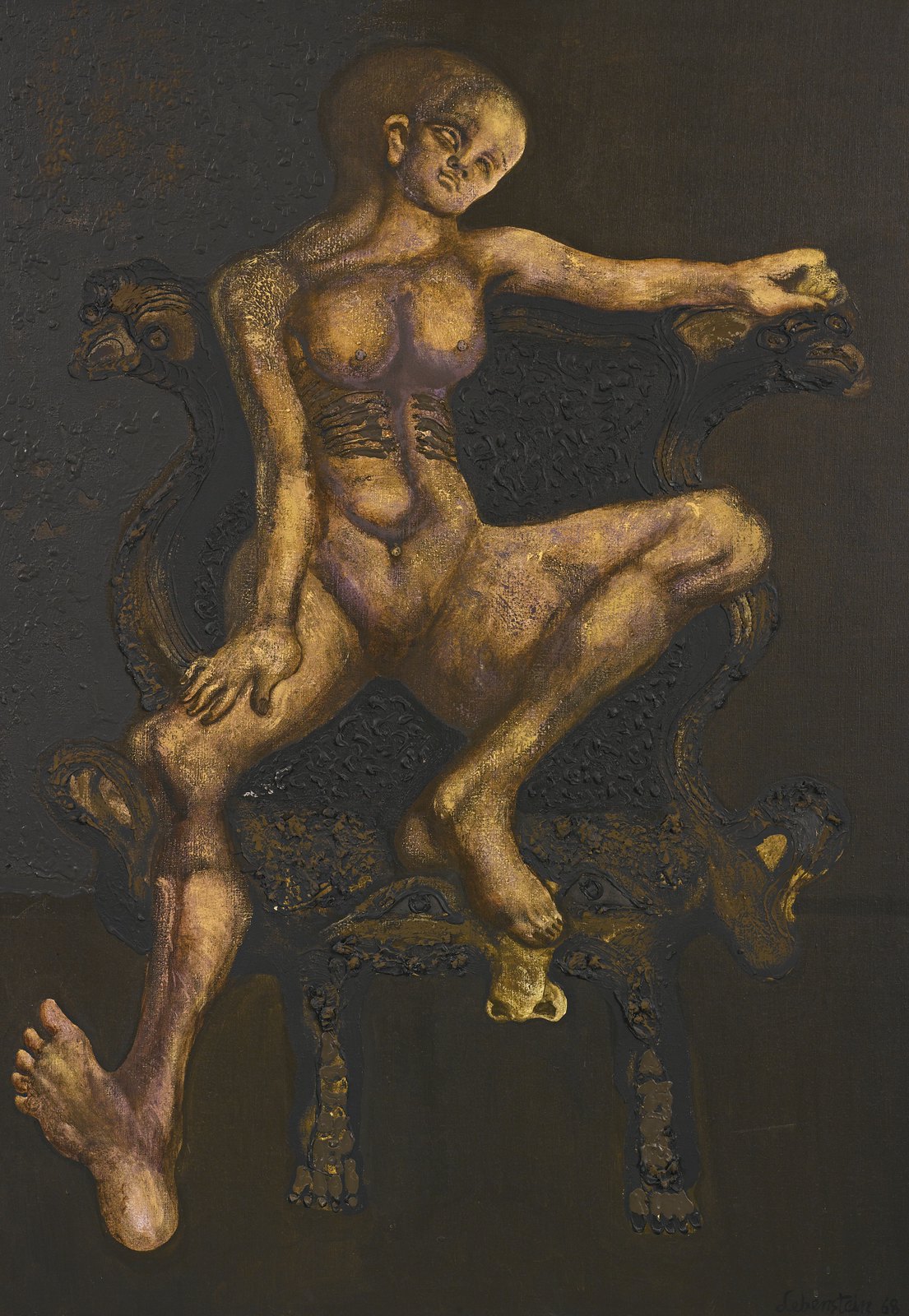 Dream Salon, 1968
Dream Salon, 1968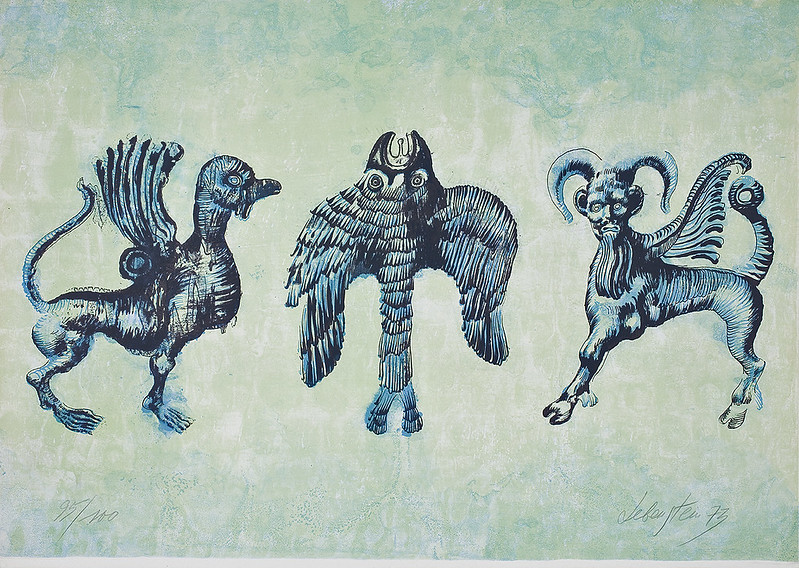 Bestiary , 1973
Bestiary , 1973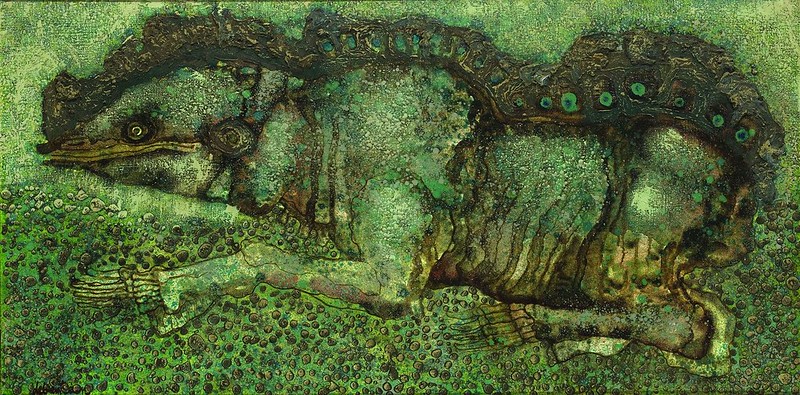 Garden, 1965
Garden, 1965 Aviation,1965
Aviation,1965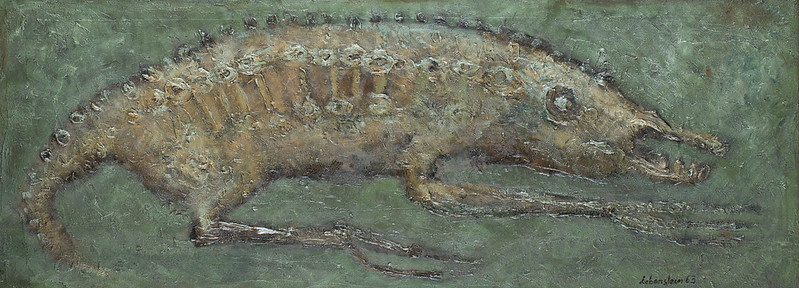 From the cycle Bestiary, 1963
From the cycle Bestiary, 1963 From Eros and Thanatos
From Eros and Thanatos Untitled ( second version) , 1963
Untitled ( second version) , 1963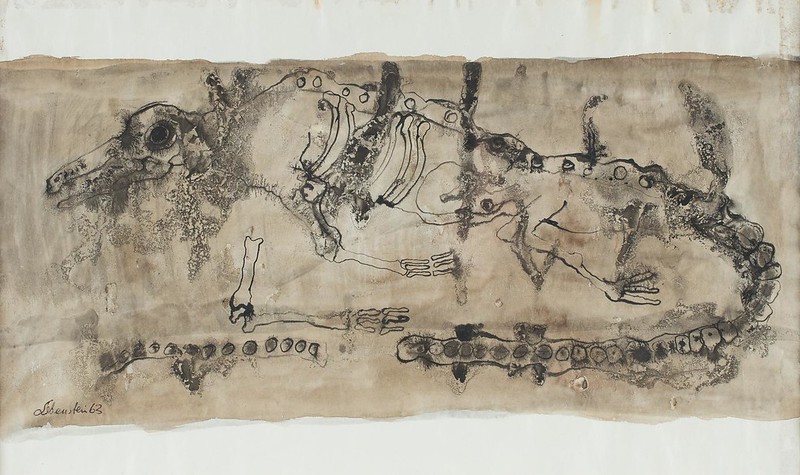 Untitled , 1963
Untitled , 1963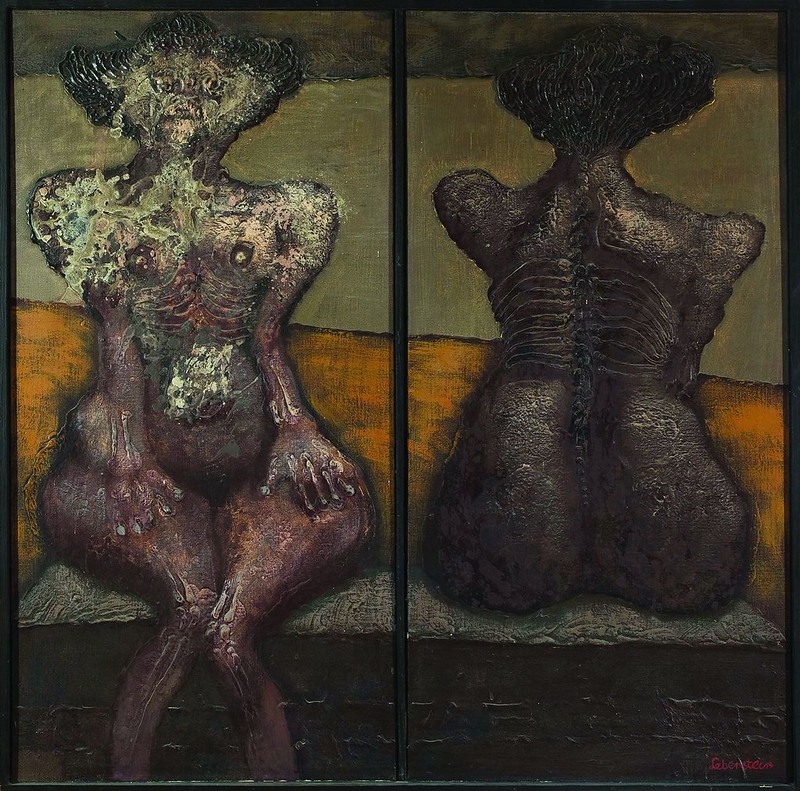 Point Of View (dyptich), 1967
Point Of View (dyptich), 1967 Composition of woman with four legs, 1973
Composition of woman with four legs, 1973"The artist's imagination was most strongly inspired by the great texts of world culture. He believed that the road to modernity lead through a processing of tradition. As he himself said, the cellars of the Louvre, filled with relics of the ancient Sumerian and Babylonian civilizations, fascinated him. He was stimulated by the mythologies of ancient civilizations like Assyria, Babylon, Egypt, and Greece, as he was by the Bible. This was the impulse for consistent production of works reflecting an apocalyptic vision of the world. His own "Zoology Lesson" - a personal myth about the derivation and animalistic nature of humans (Leçon de zoologie, 1972) - occupied a central place in his art. In particular, Lebenstein emphasized the biological and physiological foundations of human sensuality. A reader of cultural archetypes, he focused mainly on erotic aspects and themes (reflected in the motifs of the Great Mother and the Great Vamp) and on the concept of Thanatos, manifested in the "Isle of the Dead" motif (Lebenstein dedicated his exhibition at the Théatre National de l'Odéon in Paris to, among others, Arnold Böcklin, creator of a well-known painting of the same title). He caricatured "human fauna", creating strange creatures barely recognizable as being of "human derivation" (Carnet intime series, 1960-65). These pre-evolutionary representatives of archaic tribes were evidently subject to the pressures of untamed desires and appeared above all in Lebenstein's work after 1960 (Bottom I, Inassouvissement, both 1969).
At around the same time he created a series of paintings that portrayed "prehistoric" animals (Créatures abominables series, 1960-65) and imagined "vertebrates" (Deux vertébrés, 1966). This rich, baroque bestiary served as a bank of models from which he drew direct inspiration for subsequent works. Carefully and arduously formed, his compositions of this time seem almost sculpted in wrinkled, dough-like layers of paint, and radiant with an exceptional richness of subtle pictorial effects. Lebenstein would soon abandon this extraordinary noble material in favor of a stylization that also characterized his gouaches and temperas of the 1970s and 80s (between 1976 and 1989 the painter used no oils). These are distinguished above all by fine, often manneristic, curving lines (Animals' Sweety Bar, 1976; Asile, 1989). The works, no longer possessing the textures of his earlier oil paintings, are worthy of note for their unsettled atmosphere and tension inherent in complicated, erotic "dangerous liaisons".
In contrast to many 20th century artists, who shied away from narration in their paintings, drawings, and prints, Lebenstein not only tended towards anecdote, but was also an illustrator of literary works. His achievements in this sphere include a series of outstanding illustrations - to George Orwell's "Animal Farm" (1974), the "Book of Job" (1979), the "Apocalypse" (1983), and the "Book of Genesis" (1995). The artist also produced illustrations for a number of short stories by his friend Gustaw Herling-Grudziński. Furthermore, Lebenstein designed a stained-glass window with scenes of the Apocalypse for a Palotine chapel in Paris (1970) and dabbled in scenery design." - quote source

No comments:
Post a Comment